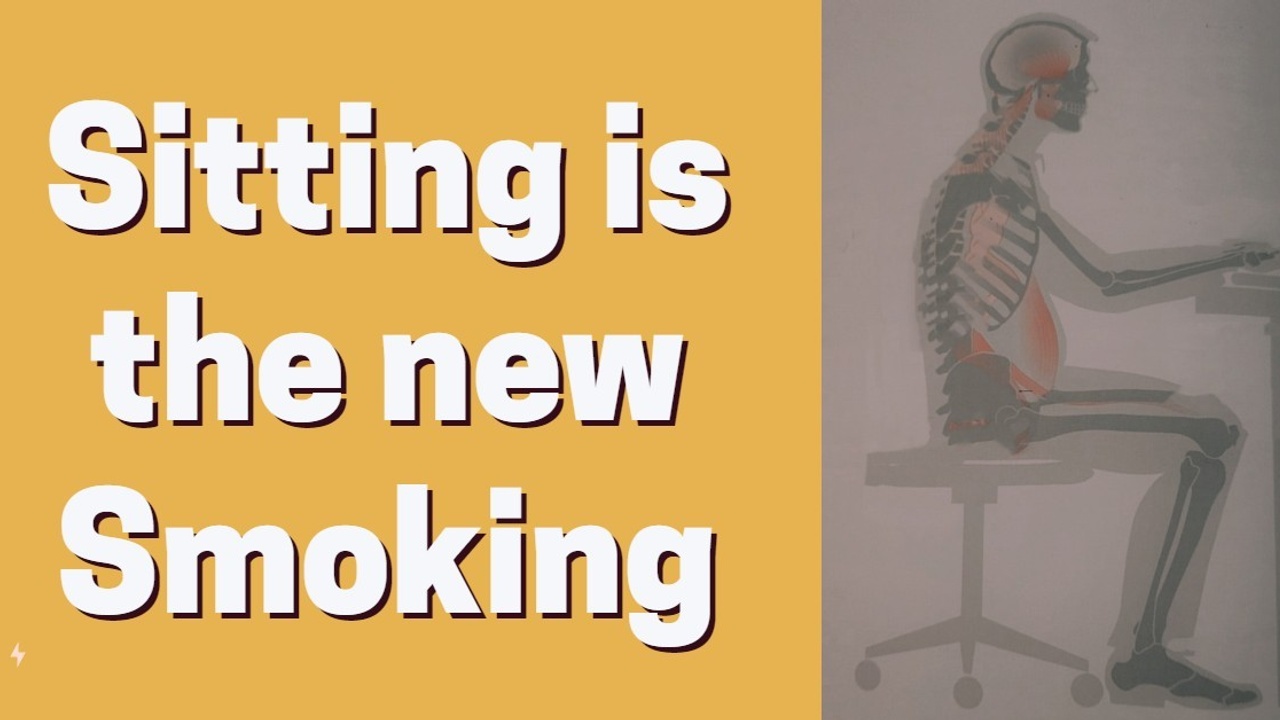The world is changing, and it is becoming more and more sedentary as time passes! We are sitting long hours each day at work, then in the car or plane traveling from one place to another. Then we arrive home tired and sit further hours in front of the TV or on our Phone and while eating.
We might head to the gym to work out for an hour or two, hoping it will make up for all those seated hours during the day.
But is exercise enough to fix it? Will it undo the damage caused by sitting?
Well, the answer is NO. Exercise indeed has several health benefits, so I am not telling you to stop working out, but encourage you to do the opposite – MOVE MORE.
Movement can include standing, walking, fidgeting, stretching, walking up the stairs, gardening, or any sort of movement for 3-5 minutes after every 25 – 30 seated minutes. This might not sound a lot, but adding all those minutes together will significantly improve your well-being.
This is called Non-Exercise Activity (Read more: Dr.Kelly Starrett: Deskbound – Standing up to a sitting world.) A waiter burns 3x as many Non Exercise Activity Calories as someone who does an office job and sits most hours.
What are the long-term effects of sitting too long, too much?
- Neck Pain
- Tight chest and stiff shoulders
- Lower back pain
- Muscle dysfunction and degeneration
- Hindered breathing
- Increased risk of heart disease
- Tight hips
- Knee pain
- Pelvic floor dysfunction
- Obesity – weight gain
- Adjusted movement
- Foggy head
- Slow metabolism
Who is to Blame?
Most of my clients are CEOs, business owners or managers, office workers who travel long hours and sit most of their time in the office or a car. They have already been suffering from some type of musculoskeletal aches and pains when they found me. Unfortunately, these issues stay unrecognized in many cases. Then people hit the gym and only after a month they are injured and unable to move.

It changes the way we move, our posture, and muscle function, and more. That will lead to poor movement or technique, muscle imbalance, dysfunction, and other injuries.
What can we do?
- Movement assessment with a professional
- Before jumping into a HIIT class, prepare your body for different movement patterns, functional movements
- Include injury prevention, mobility, stability, and recovery into your routine
- Warm-up and cool down properly
- Stretch more
- Do bedtime yoga
- Move every 25 to 30 minutes
- Take the stairs
- Walk more often
- Stand when you can
- Enjoy sports
- Play like a child
Hope this helps!
Alexandra
